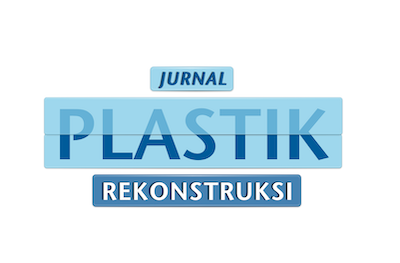Patients’ Profile of Cleft Lip and Palate : 3 Years Evaluation at Surabaya CLP Center Foundation
DOI:
https://doi.org/10.14228/qq1rdb42Keywords:
Orofacial cleft, Congenital, Cheiloplasty, PalatoplastyAbstract
Introduction: Cleft lip and cleft palate are the most common birth defects affecting newborns, yet their variability across each geographic origin is not clearly understood. This study aims to investigate the CL/P prevalence, profile, and corrective surgery timing in Surabaya, Indonesia.
Method: This retrospective research used a descriptive method by collecting medical data records from the Surabaya CLP Center Foundation from January 2021 to December 2023, which related to sociodemographic problems, clinical features, and management timing were then statistically analyzed.
Results: A total of 495 patients underwent cleft surgery, of which 59.4% were male and 40.6% were female. The most common type of Craniofacial Cleft observed is Combination Cleft Lip and Palate “CLP” (71.1%). CLP is more common in male patients than in female patients (43.4% vs. 27.7%); while CL is more common among males (14.1% vs. 9.7%) and CP is more common in females (3.2% vs. 1.8%). Significantly, complete clefts (72.9%) were more common than the incomplete clefts (27.1%). Unilateral clefts were more common than bilateral clefts (76.2% vs 18.8%). It was observed that only 22% of patients had a family history of CL/P. Overall, 74,9% of patients underwent corrective surgery within the right period.
Conclusions: The data shows that most patients tended to seek medical advice and treatment at appropriate times, suggesting a high awareness of CLP as the result of proactive education and social outreach by the charity institution. Further investigations using data from other institutions are suggested to conclude the CLP management in Surabaya entirely.
References
1. Zhou X, Jiang Y, Fang J, et al. Incidence of cleft lip and palate, and epidemiology of perinatal deaths related to cleft lip and palate in Hunan Province, China, 2016–2020. Sci Rep. 2023;13(1):1-7. doi:10.1038/s41598-023-37436-y
2. A Oner D, Tastan H. Cleft lip and palate: Epidemiology and etiology. Otorhinolaryngol Head Neck Surg. 2020;5(4):1-5. doi:10.15761/ohns.1000246
3. Nahas LD, Alzamel O, Dali MY, et al. Distribution And Risk Factors Of Cleft Lip And Palate On Patients From A Sample Of Damascus Hospitals A Case Control Study. Heliyon. 2021;7(9). doi:10.1016/j.heliyon.2021.e07957
4. Sundoro A, Hilmanto D, Soedjana H, Lesmana R, Suryadinata KL. Cleft lip and palate surgery during COVID-19 pandemic in Indonesia: a 36-month experience at the Bandung Cleft Lip and Palate Center. Arch Craniofac Surg. 2023;24(3):111-116. doi:10.7181/acfs.2023.00213
5. Habel A, Sell D, Mars M. Management of cleft lip and palate. Arch Dis Child. 1996;74(4):360-366. doi:10.1136/adc.74.4.360
6. Thorne CH, , Kevin C. Chung, Arun K. Gosain, Geoffrey C. Gurtner, Babak J. Mehrara, J. Peter Rubin SLS. Grabb and Smith ’ S Plastic Surgery.; 2006.
7. Alrasheedi AN, Alshaalan SF, Alruwaili HA. The Prevalence and Risk Factors of Congenital Cleft Lip and Palate in the Northern Region of Saudi Arabia. Aljouf University Medical Journal. 2021;8(4):41-50. doi:10.12816/0059622
8. DIwana V, Gupta G, Chauhan R, et al. Clinical and epidemiological profile of patients with cleft lip and palate anomaly: 10-year experience from a tertiary care center in the sub-himalayan state of Himachal Pradesh in Northern India. J Nat Sci Biol Med. 2019;10(1):82-86. doi:10.4103/jnsbm.JNSBM_220_17
9. Vyas T, Gupta P, Kumar S, Gupta R, Gupta T, Singh HP. Cleft of lip and palate: A review. J Family Med Prim Care. 2020;9(6):2621-2625. doi:10.4103/jfmpc.jfmpc_472_20
10. van Rooij IALM, Ludwig KU, Welzenbach J, et al. Non-syndromic cleft lip with or without cleft palate: Genome-wide association study in Europeans identifies a suggestive risk locus at 16p12.1 and supports SH3PXD2A as a clefting susceptibility gene. Genes (Basel). 2019;10(12). doi:10.3390/genes10121023
11. Triwardhani A, Permatasari GW, Sjamsudin J. Variation of non-syndromic Cleft Lip/Palate in Yayasan Surabaya cleft Lip/Palate Center Surabaya, Indonesia. Journal of International Oral Health. 2019;11(4):187-190. doi:10.4103/jioh.jioh_6_19

Downloads
Published
Issue
Section
License
Copyright (c) 2025 Febe Alodia Widjaja, Iswinarno Doso Saputro

This work is licensed under a Creative Commons Attribution-NonCommercial-NoDerivatives 4.0 International License.
Authors retain the copyright of the article and grant Jurnal Plastik Rekonstruksi the right of first publication with the work simultaneously licensed under a Creative Commons Attribution License. Articles opting for open access will be immediately available and permanently free for everyone to read, download and share from the time of publication. All open access articles are published under the terms of the Creative Commons Attribution-Non-commercial-NoDerivatives (CC BY-NC-ND) which allows readers to disseminate and reuse the article, as well as share and reuse of the scientific material. It does not permit commercial exploitation or the creation of derivative works without specific permission.













